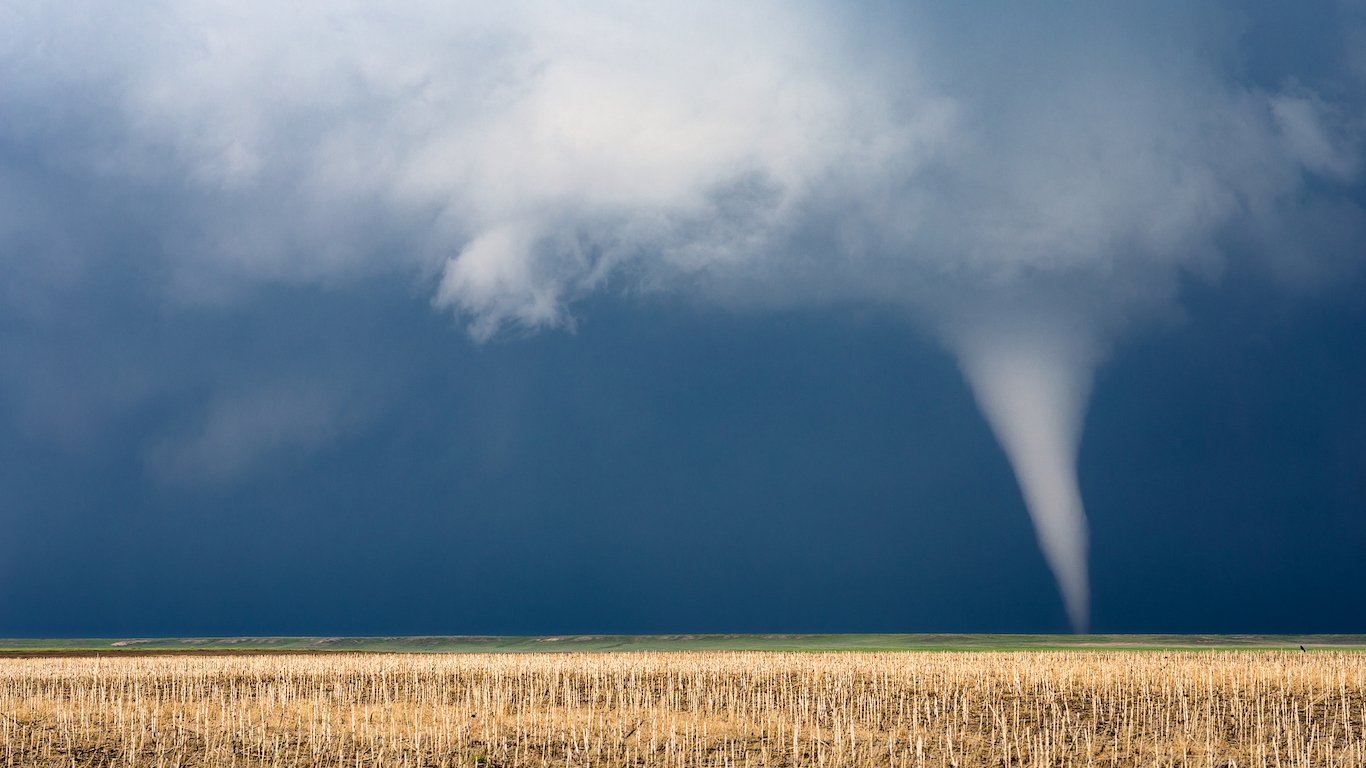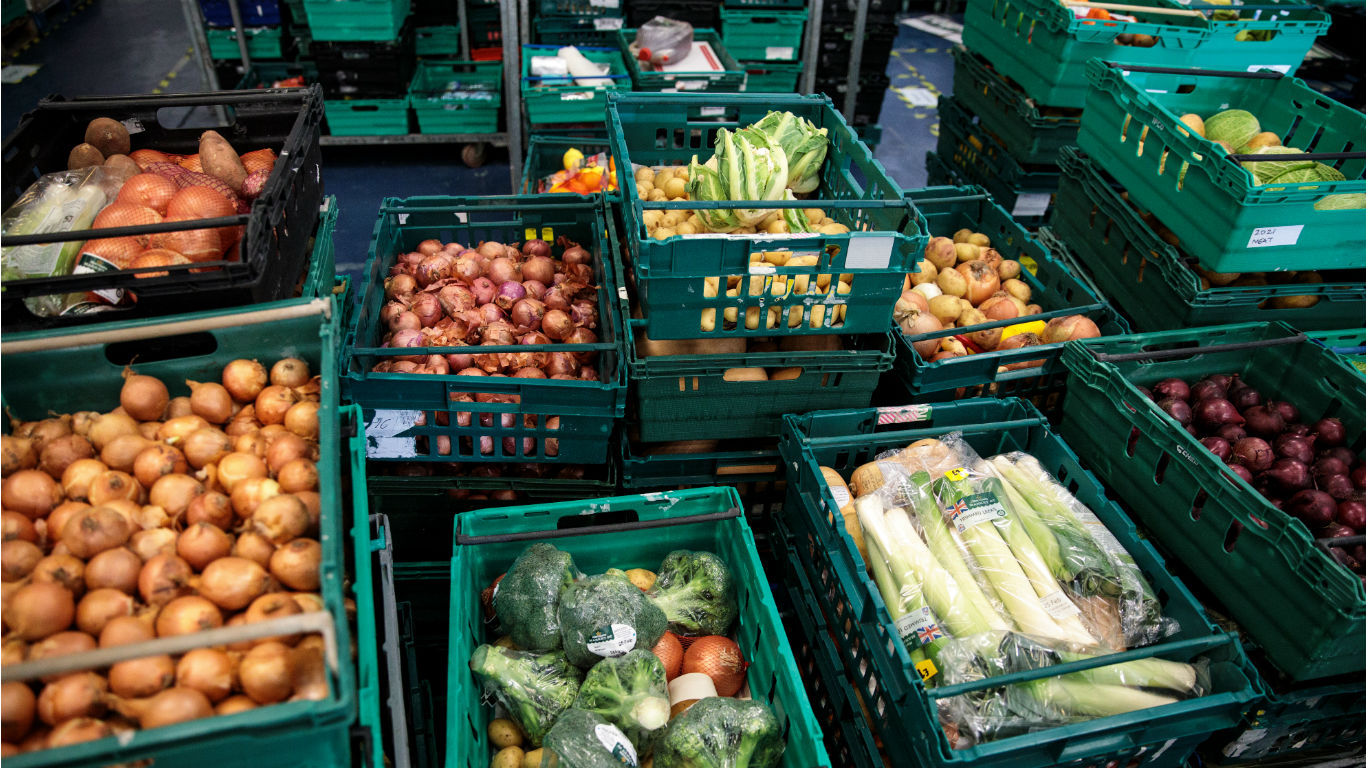

More than 820 million people around the world — just over 11% of the global population — suffer from hunger, according to the U.N.’s Food and Agriculture Organization (FAO).
At the same time, ironically — and tragically — about a third of all the food produced around the world gets lost or wasted. That adds up to about 1.3 billion metric tons of potential nourishment that doesn’t get consumed each year, including the equivalent of a billion sacks of potatoes, 3.7 trillion apples, 574 billion eggs, and 763 boxes of pasta, among other foods.
According to the FAO summary, Key Facts on Food Loss and Waste You Should Know, “Food loss and waste […] amount to a major squandering of resources, including water, land, energy, labour and capital and needlessly produce greenhouse gas emissions, contributing to global warming and climate change.”
Different parts of the world waste food in different ways. In developing countries, the problem tends to be early in the process, through inefficient farming techniques and lack of proper storage and distribution facilities. In medium- and high-income nations, the problem tends to arise in the later stages of the supply chain as consumer behavior is more likely to be to blame. There aren’t enough mechanisms in place to minimize waste — people simply buy too much food and end up not using it. These are the world’s biggest producers of waste.
Europe and North America are the biggest culprits, wasting far more food than other parts of the world — 95 kilograms (209 pounds) per capita each year or more in some cases — while consumers in South and Southeastern Asia and sub-Saharan Africa throw away only 6 to 11 kilograms (13 to 24 pounds) annually.
Click here to see the countries that waste the most food.
In the United States, people end up throwing away an exorbitant amount of the food they buy. Food accounts for 21% of the solid waste in American landfills alone.
The U.S. Environmental Protection Agency estimates that reducing food waste in America by 20% over the next decade would generate a net economic value of $10 billion for companies and consumers alike, reduce water demand by 1.6 trillion gallons, create 15,000 new jobs, and keep 9.5 million tons of waste out of landfills. Presumably other countries could see similar results.
Some 23 U.S. companies, including Walmart, PepsiCo, the Campbell Soup Company, and Yum! Brands (Pizza Hut, Taco Bell, and KFC), have committed to cutting food loss and waste in their domestic operations by 50% between now and 2030.
Walmart, which is by far the country’s largest grocery store, was the only major chain that received a “B” grade last year, when the nonprofit Center for Biological Diversity ranked the country’s largest grocery companies on their success in reducing food waste. Three other grocery chains got a “C,” five (including Whole Foods and Trader Joe’s) got a “D,” and ALDI U.S. got an “F.”
To identify the countries that waste the most food, 24/7 Tempo reviewed food waste in kilograms per capita per year in the 67 countries considered by the Food Sustainability Index 2018, developed by The Economist Intelligence Unit (EIU).
Data on food loss as a percent of total food production, emissions, water footprint, and general environmental health also came from the EIU index. Total population and GDP figures came from the World Bank’s World Development Indicators database.

30. Malta
> Food waste per capita in 2018: 51.5 kg (113.5 lbs.)
> Pct. Food loss: 8.5% (11th largest out of 67 countries)
> GDP per capita in 2018: $38,147 (18th largest out of 67 countries)
> Population: 483,530
[in-text-ad]

29. Czech Republic
> Food waste per capita in 2018: 53.0 kg (116.8 lbs.)
> Pct. Food loss: 1.3% (6th smallest out of 67 countries)
> GDP per capita in 2018: $33,414 (23th largest out of 67 countries)
> Population: 10,625,695

28. Russian Federation
> Food waste per capita in 2018: 54.0 kg (119.0 lbs.)
> Pct. Food loss: 1.9% (14th smallest out of 67 countries)
> GDP per capita in 2017: $24,791 (33rd smallest out of 67 countries)
> Population: 144,478,050
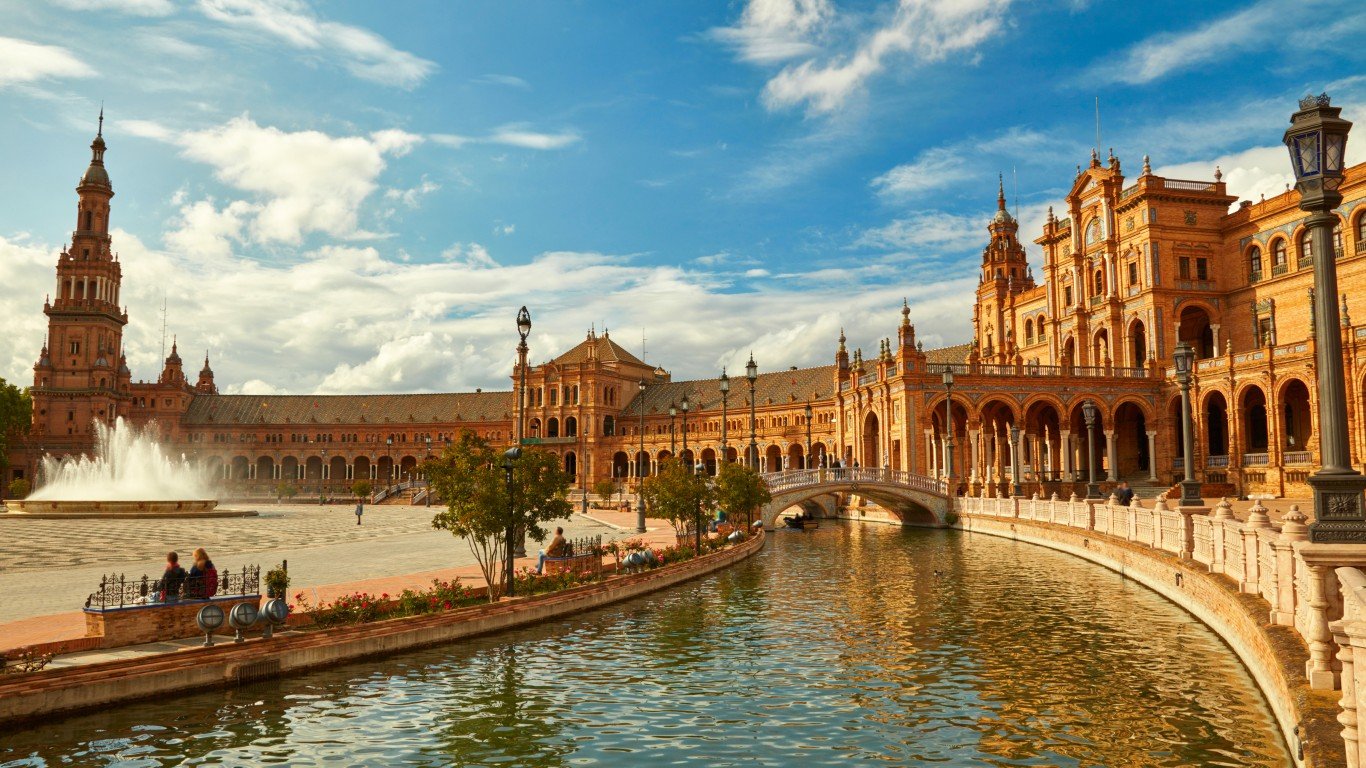
27. Spain
> Food waste per capita in 2018: 54.8 kg (120.8 lbs.)
> Pct. Food loss: 2.6% (28th smallest out of 67 countries)
> GDP per capita in 2018: $35,056 (21th largest out of 67 countries)
> Population: 46,723,749
[in-text-ad-2]

26. United Kingdom
> Food waste per capita in 2018: 54.9 kg (121.0 lbs.)
> Pct. Food loss: 1.7% (10th smallest out of 67 countries)
> GDP per capita in 2018: $40,158 (15th largest out of 67 countries)
> Population: 66,488,991

25. Luxembourg
> Food waste per capita in 2018: 55.5 kg (122.4 lbs.)
> Pct. Food loss: 1.9% (14th smallest out of 67 countries)
> GDP per capita in 2018: $93,734 (1The largest out of 67 countries)
> Population: 607,728
[in-text-ad]

24. Croatia
> Food waste per capita in 2018: 55.7 kg (122.8 lbs.)
> Pct. Food loss: 2.0% (16th smallest out of 67 countries)
> GDP per capita in 2018: $23,637 (30th smallest out of 67 countries)
> Population: 4,089,400

23. Germany
> Food waste per capita in 2018: 57.0 kg (125.7 lbs.)
> Pct. Food loss: 2.4% (24th smallest out of 67 countries)
> GDP per capita in 2018: $45,959 (10th largest out of 67 countries)
> Population: 82,927,922

22. Slovenia
> Food waste per capita in 2018: 57.0 kg (125.7 lbs.)
> Pct. Food loss: 10.9% (9th largest out of 67 countries)
> GDP per capita in 2018: $32,743 (25th largest out of 67 countries)
> Population: 2,067,372
[in-text-ad-2]

21. Poland
> Food waste per capita in 2018: 57.2 kg (126.1 lbs.)
> Pct. Food loss: 3.2% (30th smallest out of 67 countries)
> GDP per capita in 2018: $28,752 (29th largest out of 67 countries)
> Population: 37,978,548

20. Greece
> Food waste per capita in 2018: 57.8 kg (127.4 lbs.)
> Pct. Food loss: 5.1% (26th largest out of 67 countries)
> GDP per capita in 2018: $25,141 (34th largest out of 67 countries)
> Population: 10,727,668
[in-text-ad]

19. Portugal
> Food waste per capita in 2018: 59.2 kg (130.5 lbs.)
> Pct. Food loss: 4.3% (33rd largest out of 67 countries)
> GDP per capita in 2018: $28,687 (29th largest out of 67 countries)
> Population: 10,281,762

18. Netherlands
> Food waste per capita in 2018: 59.7 kg (131.6 lbs.)
> Pct. Food loss: 1.4% (7th smallest out of 67 countries)
> GDP per capita in 2018: $49,804 (5th largest out of 67 countries)
> Population: 17,231,017

17. Sweden
> Food waste per capita in 2018: 60.5 kg (133.4 lbs.)
> Pct. Food loss: 2.1% (18th smallest out of 67 countries)
> GDP per capita in 2018: $47,194 (8th largest out of 67 countries)
> Population: 10,183,175
[in-text-ad-2]

16. Estonia
> Food waste per capita in 2018: 60.9 kg (134.3 lbs.)
> Pct. Food loss: 0.7% (3rd smallest out of 67 countries)
> GDP per capita in 2018: $30,991 (27th largest out of 67 countries)
> Population: 1,320,884

15. Bulgaria
> Food waste per capita in 2018: 60.9 kg (134.3 lbs.)
> Pct. Food loss: 7.0% (19th largest out of 67 countries)
> GDP per capita in 2018: $19,321 (30th smallest out of 67 countries)
> Population: 7,024,216
[in-text-ad]

14. Romania
> Food waste per capita in 2018: 61.3 kg (135.1 lbs.)
> Pct. Food loss: 1.7% (10th smallest out of 67 countries)
> GDP per capita in 2018: $24,544 (32nd smallest out of 67 countries)
> Population: 19,473,936

13. Slovak Republic
> Food waste per capita in 2018: 62.4 kg (137.6 lbs.)
> Pct. Food loss: 2.1% (18th smallest out of 67 countries)
> GDP per capita in 2018: $31,326 (26th largest out of 67 countries)
> Population: 5,447,011

12. Ireland
> Food waste per capita in 2018: 63.6 kg (140.2 lbs.)
> Pct. Food loss: 2.1% (18th smallest out of 67 countries)
> GDP per capita in 2018: $70,361 (2nd largest out of 67 countries)
> Population: 4,853,506
[in-text-ad-2]

11. Hungary
> Food waste per capita in 2018: 63.9 kg (140.9 lbs.)
> Pct. Food loss: 1.6% (9th smallest out of 67 countries)
> GDP per capita in 2018: $28,243 (31th largest out of 67 countries)
> Population: 9,768,785

10. Italy
> Food waste per capita in 2018: 65.1 kg (143.5 lbs.)
> Pct. Food loss: 2.3% (21st smallest out of 67 countries)
> GDP per capita in 2018: $35,739 (20th largest out of 67 countries)
> Population: 60,431,283
[in-text-ad]

9. Finland
> Food waste per capita in 2018: 65.5 kg (144.4 lbs.)
> Pct. Food loss: 0.4% (1the smallest out of 67 countries)
> GDP per capita in 2018: $41,899 (13th largest out of 67 countries)
> Population: 5,518,050

8. France
> Food waste per capita in 2018: 67.2 kg (148.2 lbs.)
> Pct. Food loss: 1.8% (13th smallest out of 67 countries)
> GDP per capita in 2018: $39,556 (16th largest out of 67 countries)
> Population: 66,987,244

7. Lithuania
> Food waste per capita in 2018: 68.5 kg (151.0 lbs.)
> Pct. Food loss: 1.5% (8th smallest out of 67 countries)
> GDP per capita in 2018: $31,065 (27th largest out of 67 countries)
> Population: 2,789,533
[in-text-ad-2]

6. Denmark
> Food waste per capita in 2018: 71.6 kg (157.9 lbs.)
> Pct. Food loss: 2.5% (26th smallest out of 67 countries)
> GDP per capita in 2018: $47,673 (7th largest out of 67 countries)
> Population: 5,797,446

5. Austria
> Food waste per capita in 2018: 73.6 kg (162.3 lbs.)
> Pct. Food loss: 2.5% (26th smallest out of 67 countries)
> GDP per capita in 2018: $46,473 (9th largest out of 67 countries)
> Population: 8,847,037
[in-text-ad]

4. Australia
> Food waste per capita in 2018: 76.3 kg (168.2 lbs.)
> Pct. Food loss: 0.5% (2nd smallest out of 67 countries)
> GDP per capita in 2018: $45,439 (11th largest out of 67 countries)
> Population: 24,992,369

3. Canada
> Food waste per capita in 2018: 78.2 kg (172.4 lbs.)
> Pct. Food loss: 1.7% (10th smallest out of 67 countries)
> GDP per capita in 2018: $44,051 (12th largest out of 67 countries)
> Population: 37,058,856

2. Belgium
> Food waste per capita in 2018: 87.1 kg (192.0 lbs.)
> Pct. Food loss: 2.3% (21st smallest out of 67 countries)
> GDP per capita in 2018: $43,218 (13th largest out of 67 countries)
> Population: 11,422,068
[in-text-ad-2]

1. United States
> Food waste per capita in 2018: 95.1 kg (209.7 lbs.)
> Pct. Food loss: 0.8% (4th smallest out of 67 countries)
> GDP per capita in 2018: $55,681 (4th largest out of 67 countries)
> Population: 327,167,434
Sponsored: Find a Qualified Financial Advisor
Finding a qualified financial advisor doesn’t have to be hard. SmartAsset’s free tool matches you with up to 3 fiduciary financial advisors in your area in 5 minutes. Each advisor has been vetted by SmartAsset and is held to a fiduciary standard to act in your best interests. If you’re ready to be matched with local advisors that can help you achieve your financial goals, get started now.
Thank you for reading! Have some feedback for us?
Contact the 24/7 Wall St. editorial team.
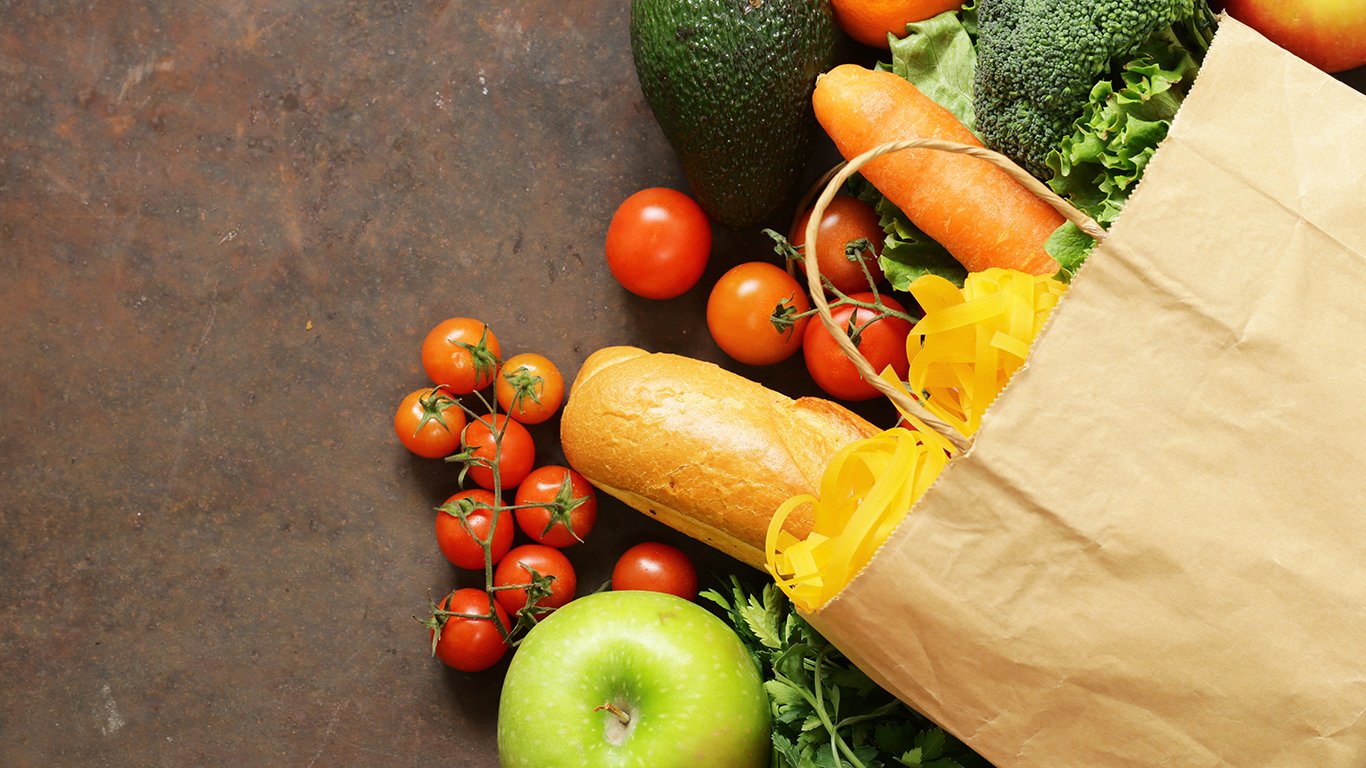 24/7 Wall St.
24/7 Wall St.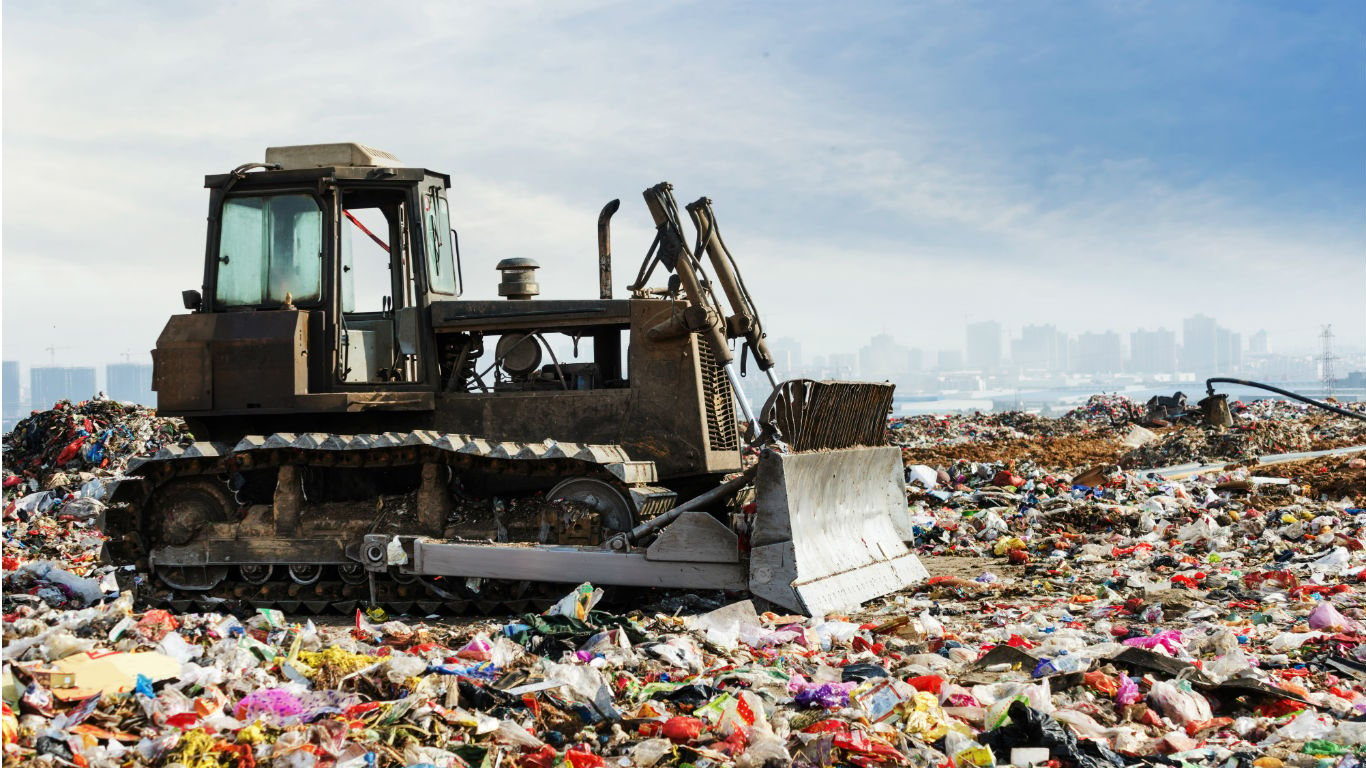 24/7 Wall St.
24/7 Wall St. 24/7 Wall St.
24/7 Wall St.
